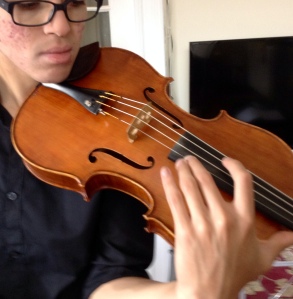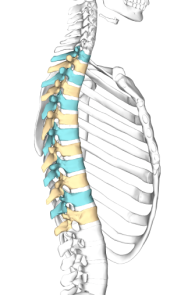The challenge for many string players is to play comfortably and shifting can present a particular challenge. Especially when shifting beyond the 3rd position, one must ‘get around’ the instrument, which causes strain in the hand and fingers for many.
But the real problem is not the distance that needs to be covered but the ability to free the hand and fingers to do this with ease. Not only must the arm and shoulder function using only the necessary amount of tension and relaxation, the player must discover how to make use of the back muscles and functionality of the back and spinal chord.
The spinal chord is typically curling and straightening to accommodate daily movements whether reaching down to pick something up, or looking up into the sky.
Standing upright try the following movement observations.
1. Slowly lower the head, neck, shoulders, back, with arms hanging down. Notice how the vertebra create a ‘c’ as this curling position happens.
2. Now begin to straighten back up, starting with the vertebra at the base of the spine, mid, upper back, neck head, shoulders, until its possible to look at the ceiling.
Taking this motion a step further, this feeling of support from the vertebrae and spinal chord should be in play when supporting the instrument so the shoulders and arm are freed up for shifting. In fact the support of the back should enable the player to free up the arms and shoulders from ‘gripping the instrument because making use of the back and spinal chord enables the player to balance the instrument and angle the instrument in relation to the body so there is a sense of the instrument ‘falling into the body’ rather than being compressed by neck, shoulders and head.


